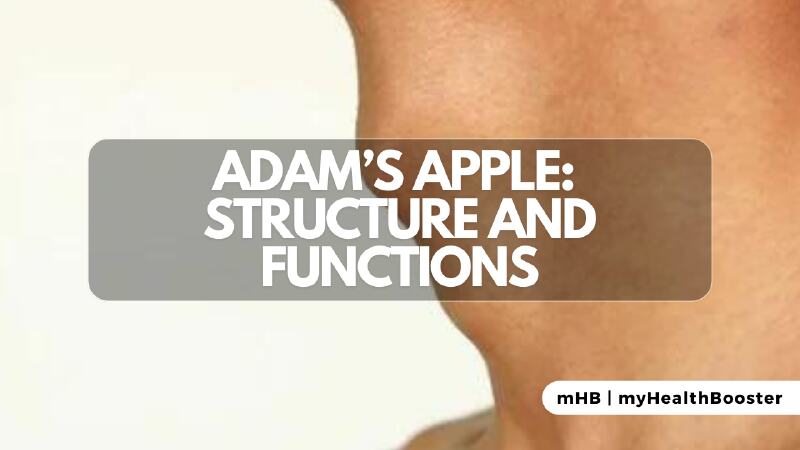The Adam’s apple, scientifically termed the laryngeal prominence, is a unique cartilage structure enveloping the front of the larynx or voice box. Despite its intriguing name, the association with apples is more folklore than anatomy. This article delves into the structure of the Adam’s apple, its significance, and the factors influencing its size.
Anatomy of Adam’s Apple: More Than a Shield
Comprising the thyroid cartilage, the Adam’s apple is a symphony of cartilages, each with a distinct role. The thyroid cartilage, the largest of them, forms the Adam’s apple, safeguarding the front of the neck. Other crucial cartilages, including cricoid, epiglottis, arytenoid, corniculate, and cuneiform, collaborate to ensure clear airways and facilitate speech.
The Thyroid Cartilage: Not Dictating Thyroid Function
Named after the Greek word thyreos, meaning oval shield, the thyroid cartilage plays a crucial role in pitch modulation during voice changes. Despite its nomenclature, the size of the thyroid cartilage does not impact thyroid function.
Adam’s Apple Size Matters
The size of the Adam’s apple is a secondary sexual characteristic, emerging during puberty. Typically larger and more prominent in males due to a larger voice box, it is influenced by the production of testosterone. Higher levels of testosterone, particularly in females, may lead to a larger Adam’s apple along with other signs like increased acne, body hair, and a deepened voice.
Natural Variations: The Angle Perspective
The prominence of the Adam’s apple is also influenced by its angle around the voice box. Women generally have a wider angle, resulting in a less conspicuous Adam’s apple that rests against the voice box.
Surgical Interventions: Cosmetic Considerations
While surgical interventions on the Adam’s apple are primarily cosmetic, they do exist. A laryngeal shave, or chondrolaryngoplasty, reduces the Adam’s apple’s size for aesthetic purposes. Recovery involves voice rest and a brief period of avoiding solid foods.
Adam’s Apple Augmentation
Conversely, individuals may seek augmentation to enhance their Adam’s apple for a more masculine appearance. This procedure involves creating an implant from the patient’s cartilage, often sourced from the ribcage, and attaching it to the thyroid cartilage.
Cartilage Grafts: Addressing Windpipe Defects
Beyond cosmetic considerations, Adam’s apple surgery includes cartilage grafts to treat windpipe defects in infants and young children. This procedure highlights the versatility of Adam’s apple-related surgeries.
Summary
The Adam’s apple, a nuanced structure, embodies both cosmetic aspirations and medical interventions. Understanding its anatomy, the factors influencing its size, and the options available for surgical alterations empowers individuals to make informed choices about their laryngeal prominence. Whether a symbol of secondary sexual characteristics or a canvas for cosmetic adjustments, the Adam’s apple remains an intriguing facet of human anatomy.
